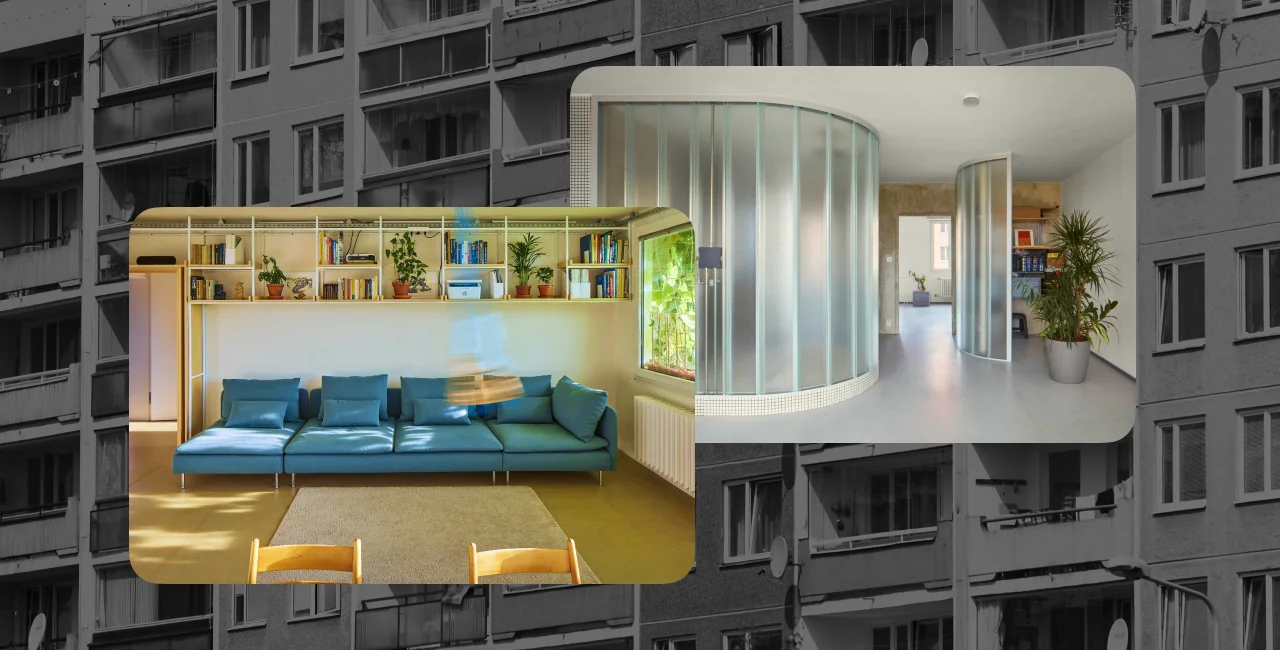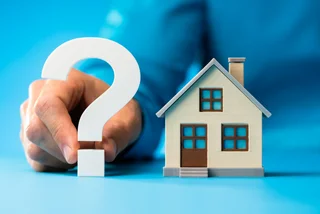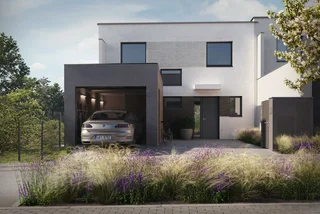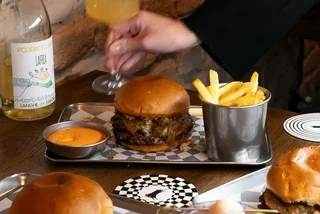Once symbols of the monotony of socialist life, communist-era panel buildings—or paneláks—in the Czech Republic are experiencing a design renaissance. Long criticized for their stark uniformity and utilitarian focus, these apartment complexes are now becoming canvases for creative transformation, with a wave of architects and designers taking innovative approaches to making these homes modern, functional, and even design-forward.
Speaking to the Czech News Agency (ČTK), interior designer Ivy Bastlová noted a shift in Czech attitudes toward home design.
“Czechs pay more attention to functionality than appearance, a result of socialism, when there was no choice in shops,” she explains. But that’s slowly changing. While Czechs may traditionally resist extravagance, many are consulting interior designers and furniture houses, suggesting a growing interest in curated, well-designed spaces.
Minimalist transformations
Architects are emphasizing minimalism in panelák renovations, finding ways to create expansive, uncluttered spaces within the typically compact layouts of these buildings. René Dlesk of RDTH Architects redesigned his family’s panel apartment, focusing on simplicity and flexibility.
“We kept the apartment largely white, focusing on built-in furniture to maximize space,” Dlesk told Czech server Newstream. The apartment’s main living area is a multipurpose zone, doubling as a kitchen, dining room, exercise area, and even a play area for his children. This approach ensures each square meter is used effectively, which is a practical solution for urban family living.
Light, open space, reconfigured layouts
Sculptor and glassmaker Vladimír Bachorík took his panelák transformation further, choosing to forgo traditional doors altogether in his Prague apartment. Working with the NEUHÄUSL HUNAL studio, the team opted for half-partitions made of copilite glass blocks that diffuse natural light throughout the space, creating an airy, open layout.
“Our goal was to create a maximum degree of freedom,” explains the architects. This design, marked by translucent glass curves, is a nod to Bachorík’s artistic career, blurring the boundaries between functional zones.
Architects are reimagining the interiors of these buildings by reconfiguring traditional layouts. For example, an apartment in Prague’s Vysočany district saw the bedroom and living room swapped, a clever adaptation that opened up new possibilities for personalizing cramped spaces.
In another project, Dlesk retained certain marks of the building’s age, like exposed panel joints, to preserve a sense of history within the modernized layout.
“It’s similar to restoring historical monuments where different periods of development are visible,” he explains, reflecting a growing appreciation for blending past and present in Czech interior design.
No longer just relics of a bygone era, they are becoming a testament to Czech creativity and adaptability—proof that a well-designed home is more than just four walls; it reflects personal style and evolving cultural values.
As Bastlová notes, “The change in society’s thinking is a long-distance race,” but the results show how far Czech design has come.
Prefab apartment insights
- Quick turnover: Despite needing costly renovations, prefab apartments in Prague are popular and sell faster than brick apartments—spending an average of 81 days on the market, compared to 109 days for brick.
- Affordable option: With high mortgage rates and real estate prices, prefab apartments, especially those from the 1970s-1980s, have become a more accessible alternative, with prices per square meter falling from CZK 114,000 in early 2022 to CZK 93,000 in 2023.
- Value comparison: A typical 70-square-meter prefab apartment costs around CZK 6.6 million, significantly less than similar-sized units in brick buildings (CZK 8.3 million) or new constructions (over CZK 10 million).
- Steady appreciation: Despite a recent price dip, prefab apartments remain a strong investment, appreciating over 100 percent between 2015-2022 and starting to climb again as of late 2023, with areas like Prague 11 approaching mid-2022 prices.
Source: Hospodářské noviny












 Reading time: 3 minutes
Reading time: 3 minutes 






















